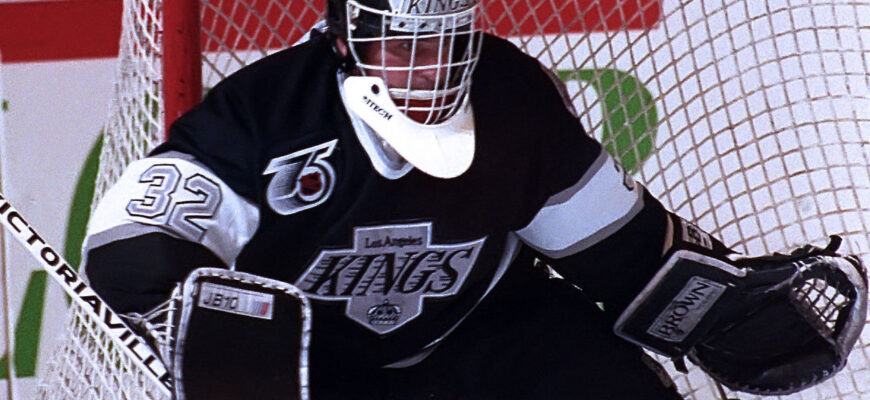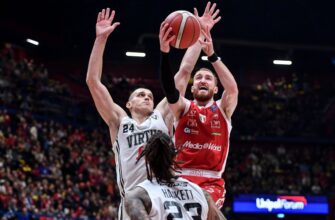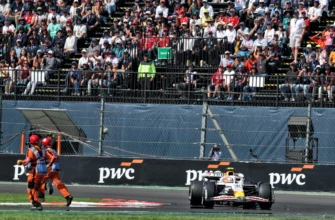In the fast-paced, high-stakes world of professional hockey, few positions demand as much scrutiny and consistent brilliance as the goaltender. For decades, the narrative was simple: find your franchise netminder, hand him the keys, and let him carry the load. Yet, a closer look at recent trends reveals a quiet revolution brewing in the crease, challenging the very definition of an NHL “starter.”
The Myth of the Unassailable Workhorse
Consider Connor Hellebuyck’s Vezina-and-Hart-Trophy-winning performance in the 2024-25 season. It was, by all accounts, a masterful display, seemingly a throwback to an era when a single goaltender could single-handedly dominate. He, alongside a select few like Andrei Vasilevskiy, continues to defy the evolving norm. But are these sterling individual seasons exceptions that prove the rule, rather than evidence of a sustained trend?
To truly grasp this evolution, we need to consult the data. A comparison of two distinct periods—eight seasons before the Vegas Golden Knights’ entry into the league (2009-10 to 2016-17) and eight seasons since (2017-18 to 2024-25)—paints a compelling picture:
- Pre-Expansion Era (2009-10 to 2016-17): The average crease share for a top-12 fantasy goaltender stood at a robust 74.1%. Roughly a quarter (25%) of all teams featured a goalie with a 75% or higher crease share, and more than half (54.2%) had one managing at least 65%. The “lone wolf” goalie, logging a staggering number of starts, was a common sight.
- Post-Expansion Era (2017-18 to 2024-25): The numbers tell a different story. The average crease share for a top-12 fantasy goaltender dropped to 65.0%. The prevalence of the truly dominant workload plummeted: only 7.9% of teams had a netminder with 75% or more of the crease share, and just 33.3% had at least 65%.
The message is clear: the average NHL goaltender now spends significantly less time in the net. The days of a vast pool of goalies consistently hitting the 75% threshold appear to be largely behind us. Hellebuyck and Vasilevskiy, in their exceptional consistency, represent a concentrated power, almost an anachronism in a league increasingly moving towards distributed responsibilities.
The New Normal: The 65% “Starter” and the Rise of the Tandem
If 75% is the old gold standard, then 65% has emerged as the modern benchmark for a legitimate NHL “starter.” This threshold, equating to approximately 54 starts in an 82-game season, reflects the strategic shift. Teams are no longer just seeking a workhorse; they`re looking for efficiency, durability, and a consistent level of play across their goaltending duo.
This evolution is not accidental. The NHL game has grown faster, more demanding, and physically taxing. Workload management is no longer a luxury but a strategic imperative. A well-rested goaltender, even if playing fewer games, can often deliver higher quality performances, reducing the risk of burnout and injury over a grueling season.
Case in Point: Toronto`s Goaltending Conundrum (or Masterclass?)
The Toronto Maple Leafs provide a fascinating illustration of this modern approach. In the 2024-25 season, neither Anthony Stolarz nor Joseph Woll cracked the 50% crease share mark, yet both delivered over 100 fantasy points—a testament to the high quality of their combined efforts and the team`s defensive structure. This dynamic duo finished as the 11th and 16th highest-scoring goalies in fantasy terms, without a single “true” No. 1 among them by the old metrics. For Toronto, this isn`t a problem; it`s a blueprint for success in a tandem-heavy league.
Vegas and the Shifting Sands
Conversely, the Vegas Golden Knights, who once symbolized the immediate impact of expansion, are now seeing their goaltending landscape solidify. Adin Hill, at 29 and entering his prime, saw his crease share climb to a career-high 59.7% last season. With only Akira Schmid as a clear backup, Vegas appears to be transitioning away from a traditional tandem towards a more singular focus on Hill. This demonstrates that while tandems are common, the desire for a lead netminder, when available and performing, remains potent.
Developing Talent in a Distributed System
The shift also profoundly impacts player development. Teams like the San Jose Sharks, with promising young talent like Yaroslav Askarov, can afford to slowly integrate their future stars. Askarov, currently projected to share the net, can gain valuable NHL experience without the overwhelming pressure of a full-time starter`s workload, positioning him for future dominance as the team matures. Similarly, for the Columbus Blue Jackets, the emergence of a young Jet Greaves amidst competition points to a future where potential is nurtured through shared responsibilities.
“The days of the indisputable, 75%-crease-share monarch of the net are largely in the rearview mirror. What we have now is a more nuanced monarchy, often with two rulers sharing the throne, or at least the royal duties.”
The Implications for Team Building and Strategy
For General Managers, this evolving goaltending landscape demands a more sophisticated approach. The focus shifts from identifying a single, high-cost superstar to building a robust goaltending department. This might involve acquiring two complementary goalies, fostering internal competition, or patiently developing young talent through a system of shared starts.
It also means a greater emphasis on defensive structure. A strong team defense can elevate the performance of even a moderately talented goaltending duo, making them more valuable than an elite goaltender behind a porous defense. The collective effort now defines goaltending success as much as individual brilliance.
While the romantic notion of the lone, unbreakable goalie carrying his team on his shoulders still holds a certain allure, the reality of modern NHL hockey is more pragmatic. Workloads are shared, responsibilities are distributed, and the definition of an elite goaltender is continually being refined. The future of the crease is not about finding one hero, but about strategically deploying multiple talents to achieve collective success.








